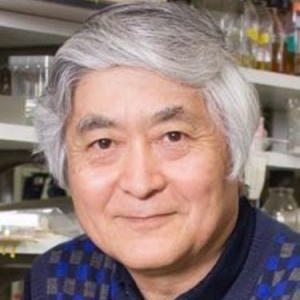RNA Polymerase and Transcription Mechanism: Forefront of Physicochemical Study
A special issue of Biomolecules (ISSN 2218-273X). This special issue belongs to the section "Enzymology".
Deadline for manuscript submissions: closed (31 August 2021) | Viewed by 24580
Special Issue Editors
Interests: nanobiology; protein sliding along DNA; one-dimensional diffusion; chemical ratchet; detailed balance; physiological conformation
Special Issue Information
Dear Colleagues,
For a half century, the study on the mechanism of RNA polymerase has been one of the top runners in terms of using newly developed methods. The obtained results on transcriptional regulation have stimulated biomedical applications such as drug discovery targeting RNA polymerases, and thus, physicochemical and genetic analyses of RNA polymerases and their accessary molecules have acquired a biomedical significance. However, recently, such a multidisciplinary method development appears to become slow or is perhaps saturated. We tend to believe that our image on biological macromolecules has been perfectly established, but it has not well been recognized that methodological saturation is partly caused by a lack of understanding of physicochemical properties of biological macromolecules, including the surrounding water molecules. For example, conventional time-averaging does not always provide the correct data and can lead to misunderstanding. It is also useful to clarify the limitation of tools that were originally developed for simpler polymers and small molecules and later applied for biomolecules.
The main goal of this Special Issue of Biomolecules is to clarify the ignored properties of macromolecules by rethinking the basis of chemical reaction in transcriptional regulations.
The topics includes (i) experimental and analytical tools for inhomogeneity of protein conformations and (ii) the contribution of thermal processes in transcriptional regulation, such as Brownian ratchet and one-dimensional diffusion.
Prof. Nobuo Shimamoto
Dr. Masahiko Imashimizu
Guest Editors
Manuscript Submission Information
Manuscripts should be submitted online at www.mdpi.com by registering and logging in to this website. Once you are registered, click here to go to the submission form. Manuscripts can be submitted until the deadline. All submissions that pass pre-check are peer-reviewed. Accepted papers will be published continuously in the journal (as soon as accepted) and will be listed together on the special issue website. Research articles, review articles as well as short communications are invited. For planned papers, a title and short abstract (about 250 words) can be sent to the Editorial Office for assessment.
Submitted manuscripts should not have been published previously, nor be under consideration for publication elsewhere (except conference proceedings papers). All manuscripts are thoroughly refereed through a single-blind peer-review process. A guide for authors and other relevant information for submission of manuscripts is available on the Instructions for Authors page. Biomolecules is an international peer-reviewed open access monthly journal published by MDPI.
Please visit the Instructions for Authors page before submitting a manuscript. The Article Processing Charge (APC) for publication in this open access journal is 2700 CHF (Swiss Francs). Submitted papers should be well formatted and use good English. Authors may use MDPI's English editing service prior to publication or during author revisions.
Keywords
- RNA polymerase
- transcriptional regulation
- thermal process
- Brownian ratchet
- one-dimensional diffusion
- active conformation
Benefits of Publishing in a Special Issue
- Ease of navigation: Grouping papers by topic helps scholars navigate broad scope journals more efficiently.
- Greater discoverability: Special Issues support the reach and impact of scientific research. Articles in Special Issues are more discoverable and cited more frequently.
- Expansion of research network: Special Issues facilitate connections among authors, fostering scientific collaborations.
- External promotion: Articles in Special Issues are often promoted through the journal's social media, increasing their visibility.
- Reprint: MDPI Books provides the opportunity to republish successful Special Issues in book format, both online and in print.
Further information on MDPI's Special Issue policies can be found here.







